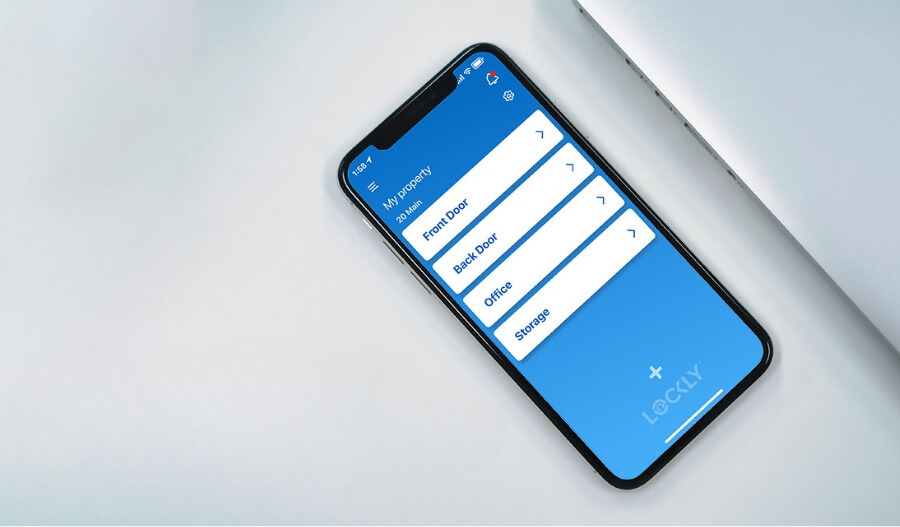Multifamily properties have traditionally relied on physical keys or keycards to control access to communal areas and individual residences. However, as technology continues to evolve, so do the expectations of both residents and property managers, and these traditional methods fall short in the level of security and convenience they provide.
Smartphone apps have revolutionised the way we consume media, manage our finances, order deliveries, and so much more. Now, they are revolutionising multifamily access control, offering unprecedented benefits to owners, renters, and property managers alike.
Traditional Access Control Systems
Traditional access control systems work on the principle of a physical token — a key or card, which the user needs to have in their possession to access the property. This can reduce convenience, as well as present a number of security vulnerabilities.
Key-based Access
The age-old method of using physical keys has its limitations. Keys can be lost, copied, or stolen, leading to potential security breaches. Managing and replacing keys for a large multifamily property can be time-consuming. And, once a key has been issued, the only way to revoke its access is to change the lock itself — an expensive process which is extremely disruptive to other residents.
Card-based Access
Keycard systems initially marked an upgrade from traditional keys, introducing a number of improvements. The cards are cheaper to manufacture, easier to replace and can be cancelled centrally, avoiding the need to replace locks in the event of a security issue. But many keycards can be cloned using commonly available technology, and like keys, they can just as easily be lost or stolen.
Advantages of Smartphone-based Access Control
Smartphone-based access control systems replace the physical token with a virtual one. This offers much greater flexibility in terms of how access rights are assigned, managed and shared, as well as essentially unbreakable levels of security.
Keyless Entry
The evolution from physical keys to smartphone-based access represents a significant leap in access control — no more fumbling through a bag for keys or worrying about misplacing them. If residents lose or replace their phone, they simply log into their app again, and they have their “keys” right there.
Alternatively, with systems like Lockly’s Backup-to-Backup, they can use a secondary access method such as a secure 3D fingerprint sensor, QR code scan or patented PIN Genie virtual keypad which randomises number order to frustrate “over the shoulder” keycode detection.
Owners, renters, and property managers have the power to grant or revoke access with just a few taps on their devices. This digital approach not only bolsters security—since there’s no physical key to lose or duplicate—but also streamlines the access process, making entry seamless for authorised individuals.
Temporary Access
Another huge advantage of virtual “keys” is that they can be generated on-demand as needed, shared with anyone over the Internet, and limited to offer only the specific access required.
With Lockly PRO’s e-key or e-badge feature, for example, users can generate time-specific or one-time access codes and send them to visitors to use on their own smartphones.
This means a dog walker can be given access only during specific hours, or a delivery person can be granted a one-time entry to drop off a package. These features not only enhance security but also offer a level of flexibility that was previously unimaginable.
Remote Visibility
The integration of video capabilities with modern locks has proven to be a game-changer, as property managers or owners can now perform real-time visual verification of visitors, even if they’re not on-site or at home themselves.
If someone attempts to access the property, the integrated video doorbell can send a live feed to the owner’s smartphone, allowing them to decide whether to grant or deny access without having to come to the door.
And, with two-way audio communication included, residents who are away from home can still speak to visitors, giving any suspicious callers the impression that the property is not vacant.
Increased Security
The dynamic nature of multifamily properties means that both residents and property personnel can change frequently. Smartphone-based access control systems give property managers the tools they need to manage these transitions easily and securely.
If a tenant moves out or a staff member’s association with the property ends, their access can be revoked instantly. This ensures that only current, authorised individuals have access, eliminating the potential security risks associated with outdated access permissions. The ability to manage and monitor these access rights from anywhere, at any time, offers unparalleled convenience, making property management more efficient and cost-effective.
For individual residents, since access is linked to their personal device — which today is usually secured with either biometrics or passcodes, unauthorised access becomes significantly more unlikely, while integration with security features such as cameras, and the ability to view access logs on their phone brings greater peace of mind.
Conclusion
Smartphone-based access control systems represent a significant leap forward in access control. Not only do they offer enhanced security and convenience, but they also present potential cost savings in the long run. While the initial investment might be higher than traditional systems, the reduced costs associated with key/card replacements, coupled with the added benefits of remote management, make it a financially viable choice.
Added to that, the rise of mobile access in multifamily properties is not just a trend — it’s a reflection of the evolving needs of modern living. Smartphone access control apps offer a solution that is flexible, secure, and convenient and caters to the diverse needs of owners, renters, and property managers — clearly, a technology that’s here to stay.



